October 18, 2018
Top Tip to Attract Butterflies + Tree Foliage Loss
Although I’m highly allergic to native Wedelia texana, formerly Zexmenia hispida, I’m thrilled when it seeds itself with abandon in my waterwise wildlife habitat. I simply don heavy-duty elbow-length gloves when I work around them.
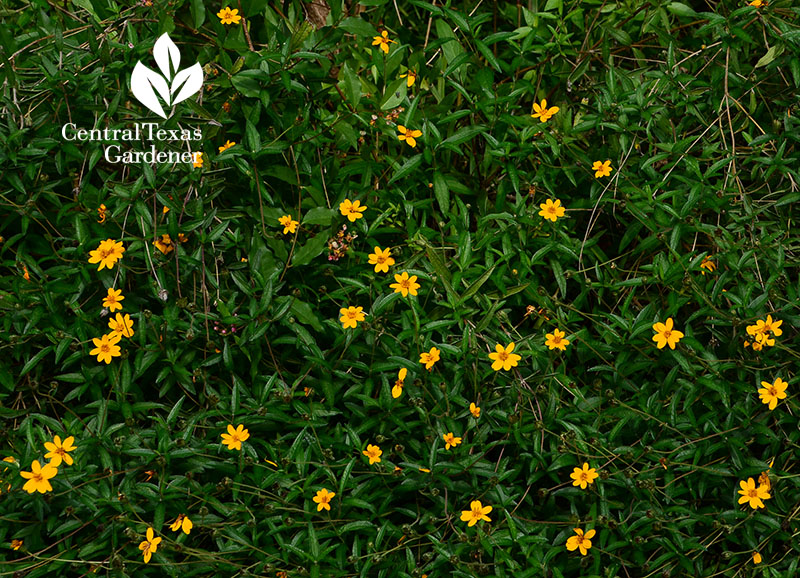
From spring to frost, crowds of bees, butterflies, and other pollinators dart around its penny-sized golden flowers. It benefits from a light pruning in late summer to push out a fall flush of flowers.
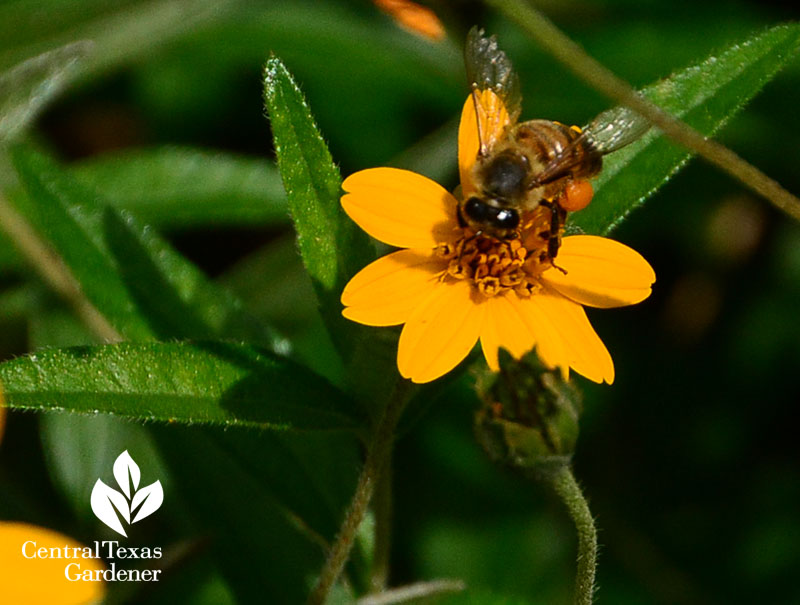
In fall, it pairs beautifully with fall asters. I don’t cut their winter-browned foliage to the ground until late February since small birds dart for seeds on both plants.
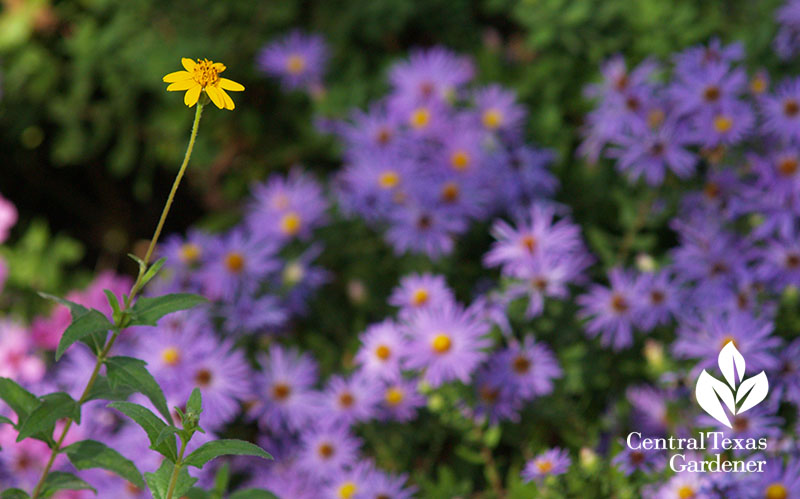
Wedelia texana’s also a larval host plant for Sierran Metalmark, Lacinia Patch, and Bordered Patch butterflies. I’ve never photographed the Bordered Patch caterpillar, but here’s a nectaring adult.
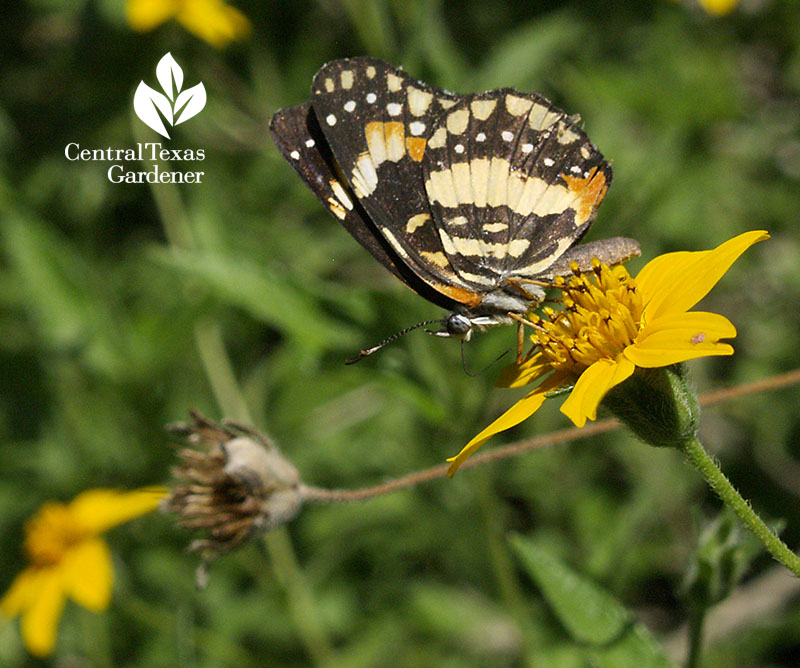
You’ll find pictures of it in all its stages—along with many other gorgeous caterpillars and butterflies—in Lynne and Jim Weber’s latest in-the-know book (with Roland H. Wauer), Native Host Plants for Texas Butterflies.
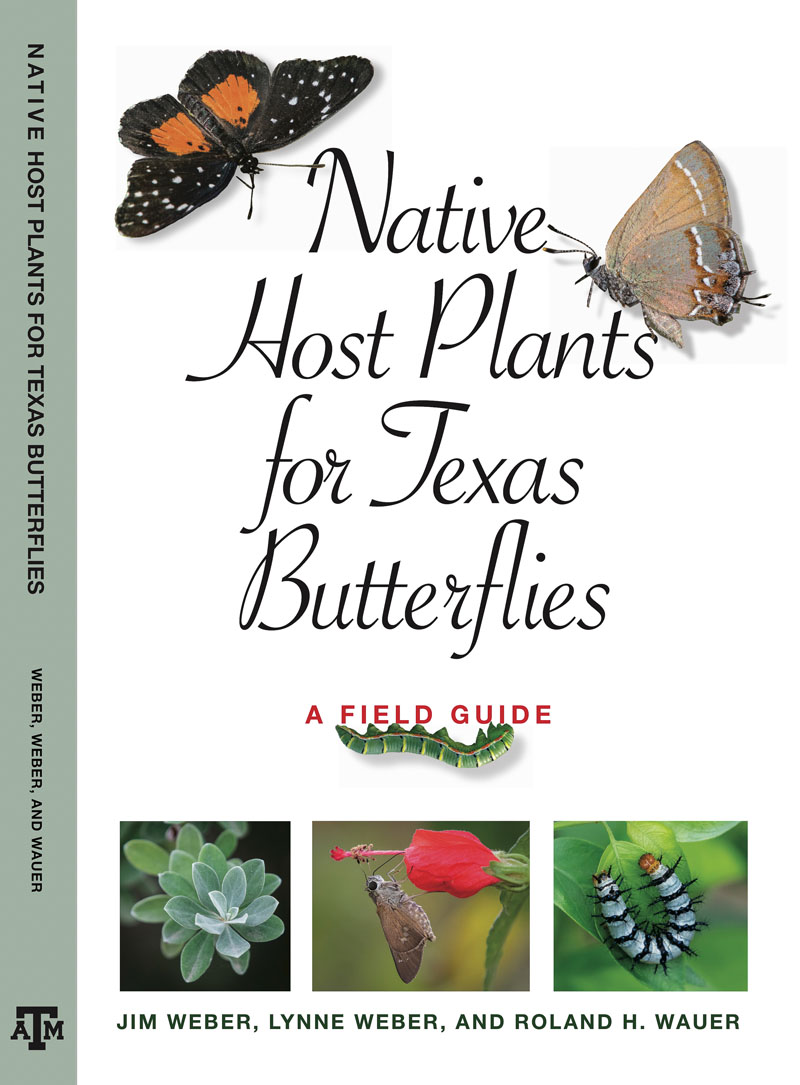
Lynne and Jim are Texas Master Naturalists, authors, and phenomenal photographers who reveal discoveries and facts in their intriguing blog, Nature Watch Austin. Their first book of the same name is a must-have guide to what you’ll see every month in ATX—wildlife, plants, and weather—and how they interact.
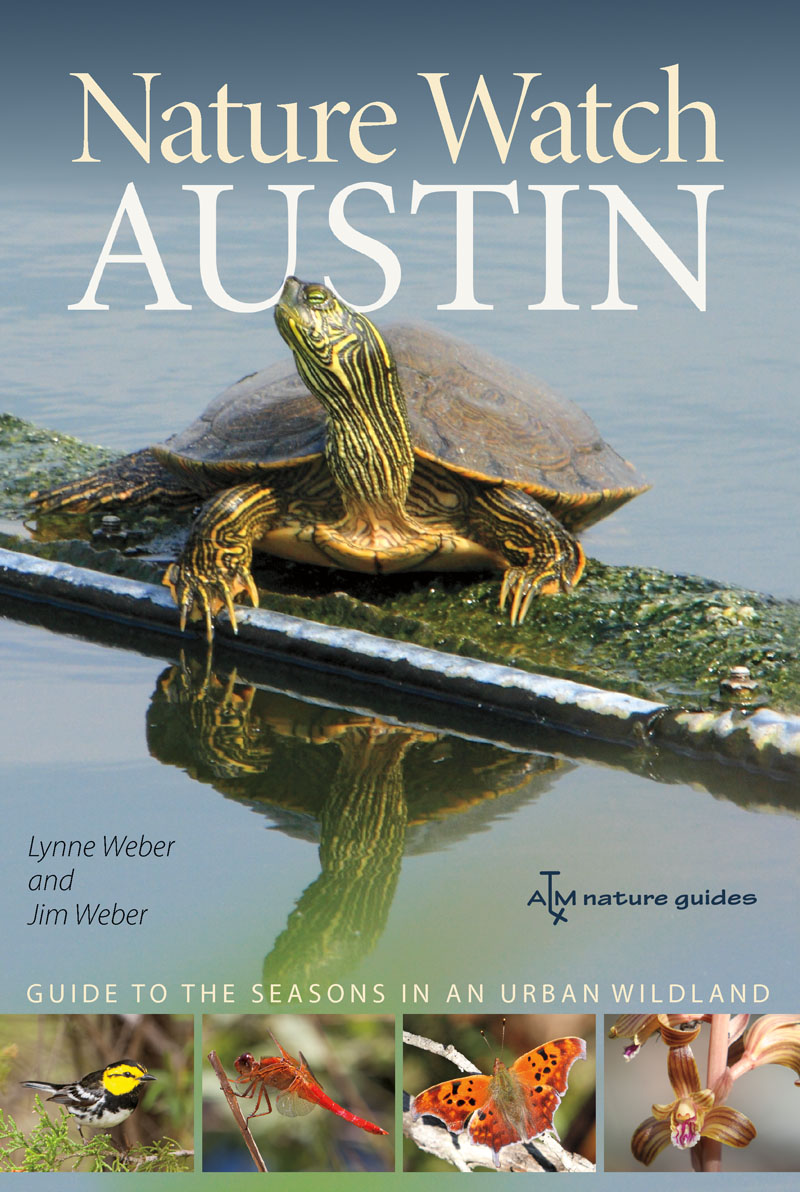
Nature Watch Big Bend takes you on the same bountiful, passionate journey in far West Texas.
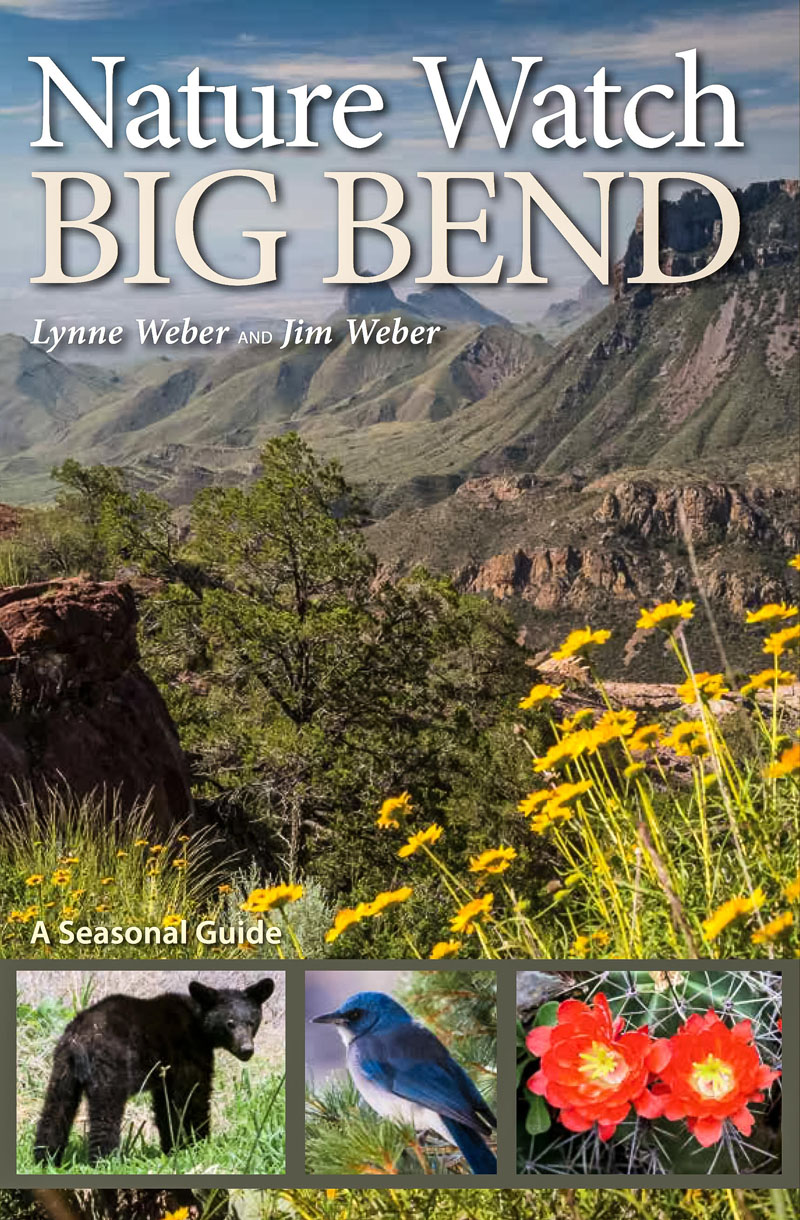
Gardeners often ask me: “How can I attract butterflies?” Food is necessary, of course, but that means more than flowers. To keep them around, you must include host plants and sacrifice a few leaves to get the next generation.
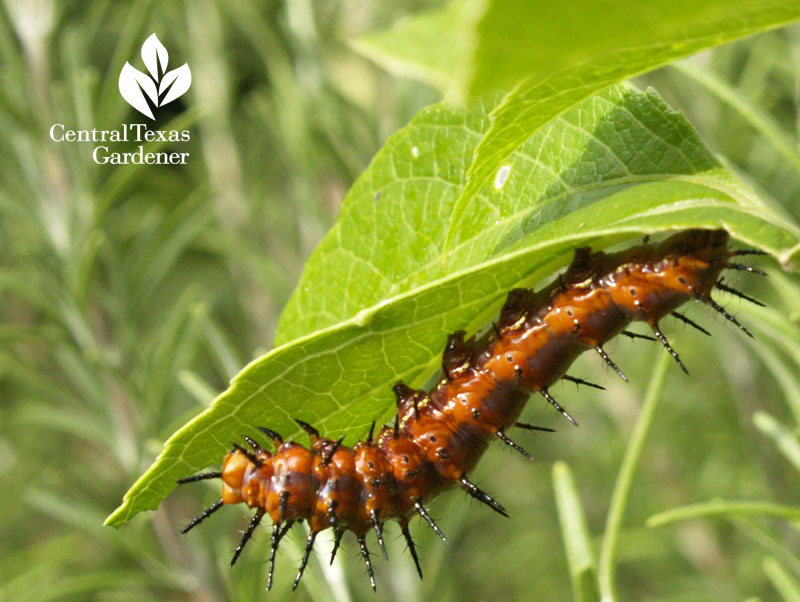
This week, Lynne and Jim identify a few of the plants in Native Host Plants for Texas Butterflies that satisfy a butterfly’s plant-specific choice to feed its larva.
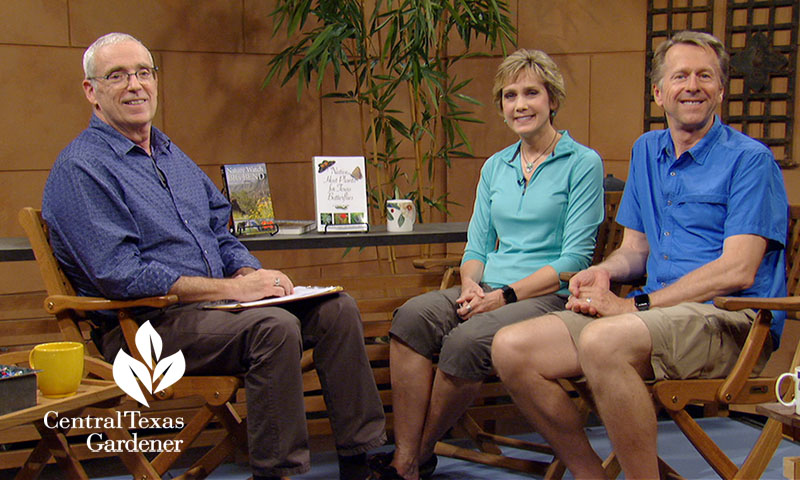
Their fascinating stories take us through a butterfly’s life cycle from egg to caterpillar to adult. You may have seen Crimson Patch on your native flame acanthus (Anisacanthus quadrifidus var. wrightii), but have you seen its caterpillar stage?
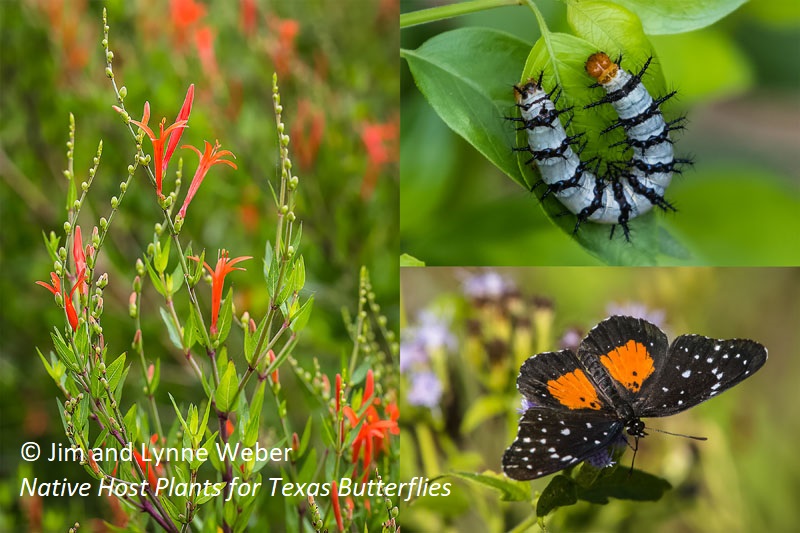
I know that I’m going to use this book a lot to identify butterflies and caterpillars, as well as plants I run into in the wild. At a glance, I can read about a plant’s natural range and how to grow it. Colorful thumbnail maps illustrate where you’ll find each plant and butterfly.
We rely on our trees just as do our valued wildlife. Drought has taken such a toll on them that I’m getting lots of questions about troubled trees. To get an expert’s answer, CTG collaborated with City of Austin Urban Forest Health Coordinator certified arborist April Rose.
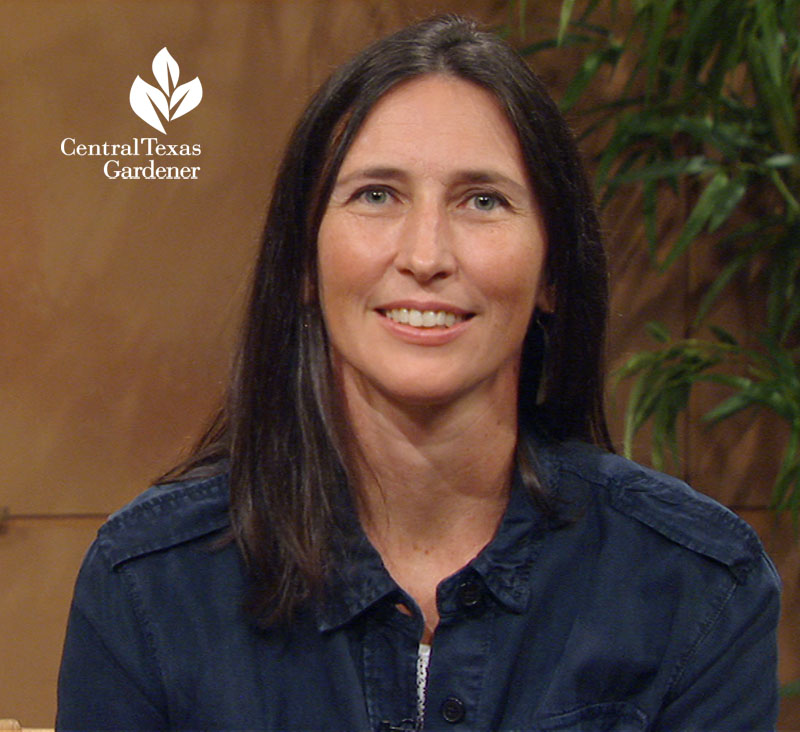
Our focus this week is why trees dropped leaves early this year or dramatically lost foliage. Photo contributed by Ron in Blanco.
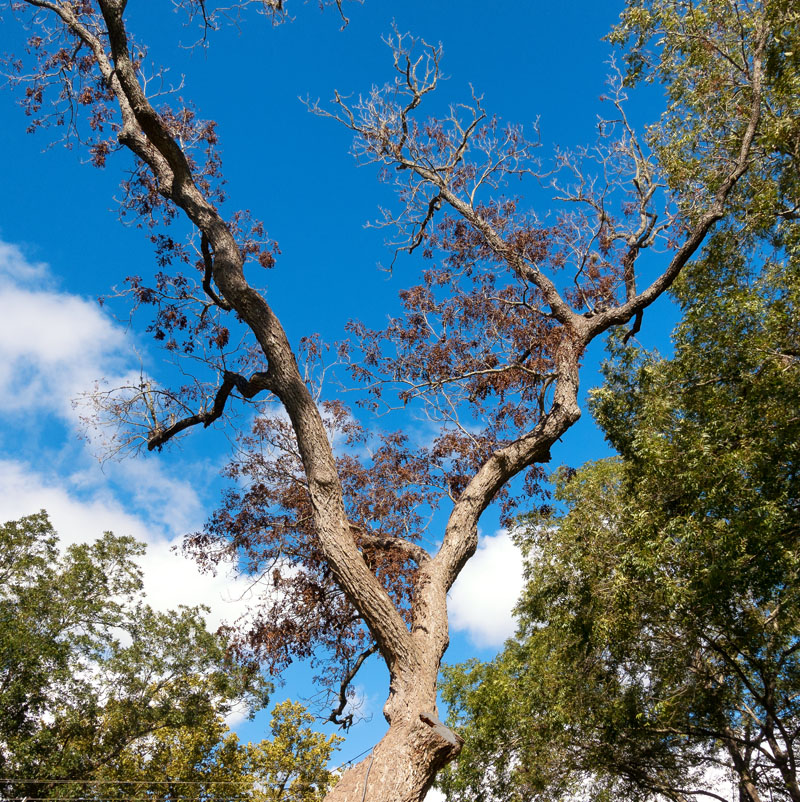
Watch now for April’s answers about Jesse’s pine tree, Julia’s red oak, and Ron’s pecan tree.
Click on Austin Nature in the City for all things trees: planting & care, ordinances, events, and more.
On Oct. 27, they’ve got a real treat for the whole family at the Roots & Wings Festival at Zilker Park and parks across the city from 9 a.m. to 2 p.m.
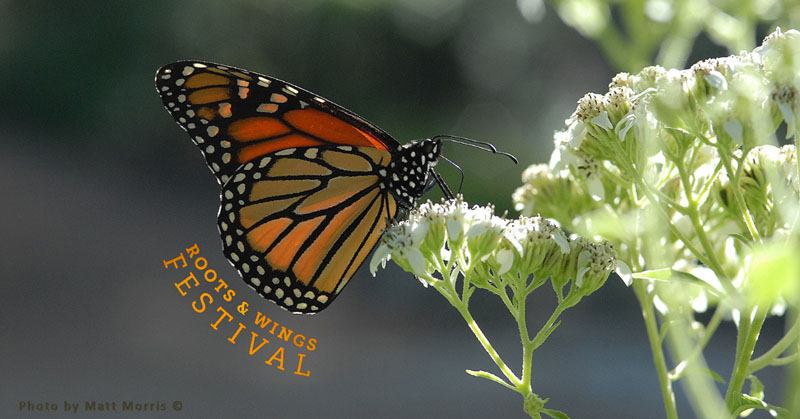
There’s lots of kids-friendly fun: face painting, nature walks, crafts, music, story-telling and tree-climbing! Come in costume or visit the costume creation station. Get the details and “fly” on down!
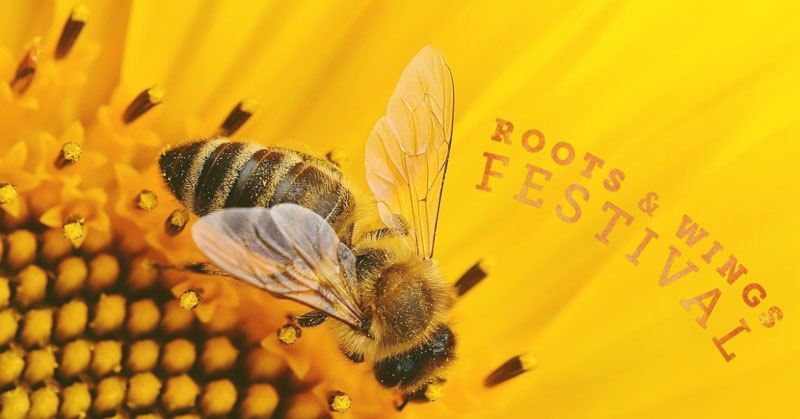
You’ll get lots of overwintering butterflies—along with bees and other pollinators—on cool weather annual calendulas. No, they aren’t native, but in containers or among dormant perennials, they’re welcomed in the frost-bitten months.
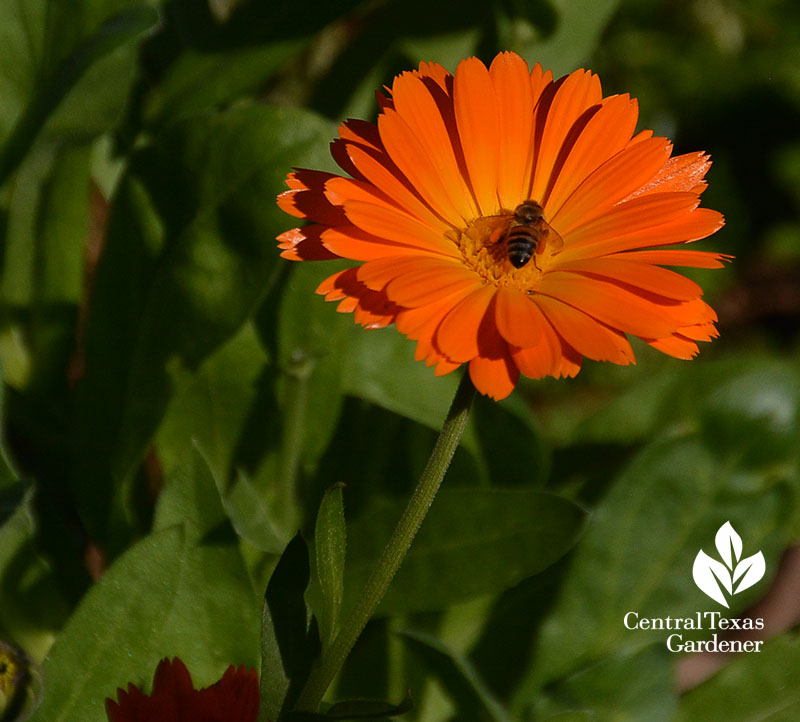
Carla Crownover, co-owner with Paula Foore of Springdale Handmade, tips us on growing calendulas. Blooming until at least May, harvest their petals (in pesticide-free gardens, natch) to sprinkle on salads.
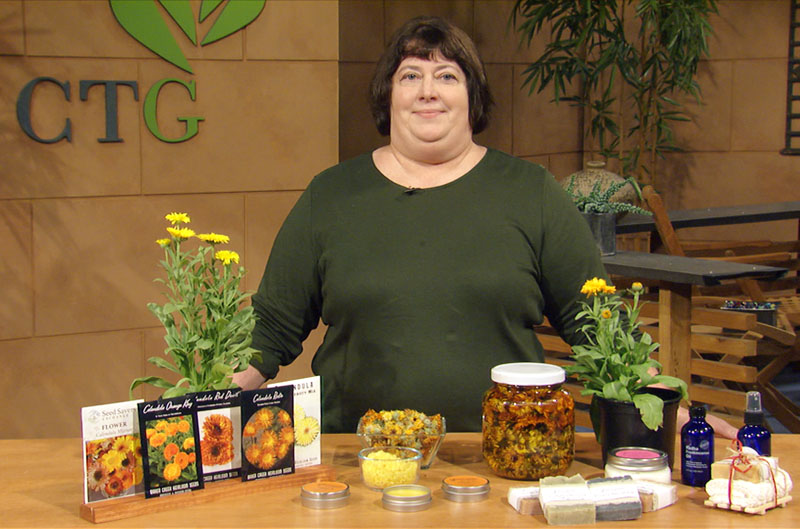
Use dried flowers in teas (unless you’re pregnant) or in potpourris.
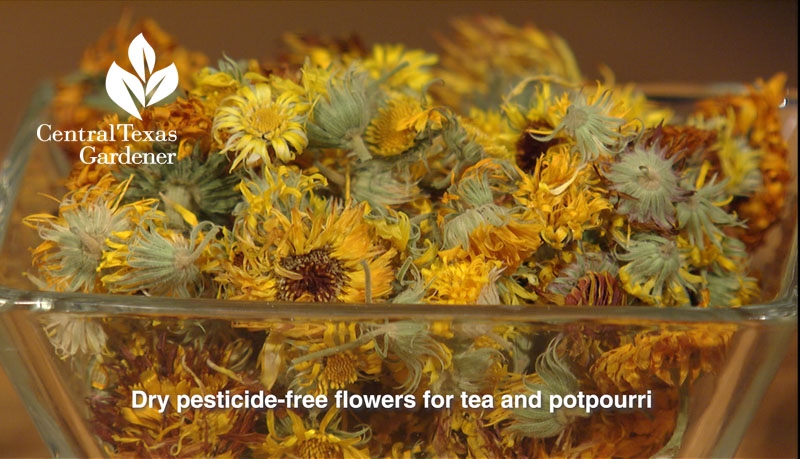
And, you can infuse them with oils to make healing skin salves.
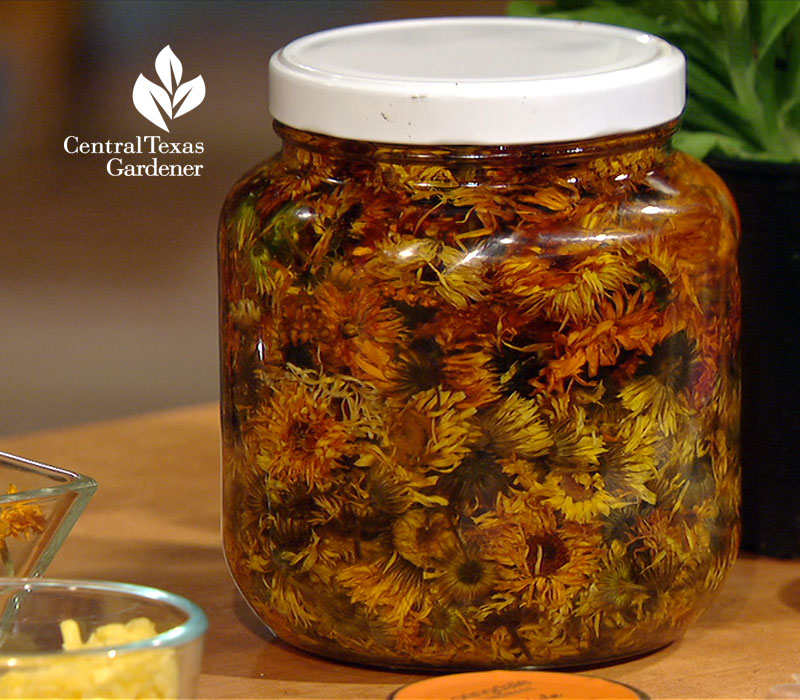
Carla explains the process and the oils that she and Paula favor for their salve: sweet almond oil, sunflower oil, and olive oil to make your own. Watch now!
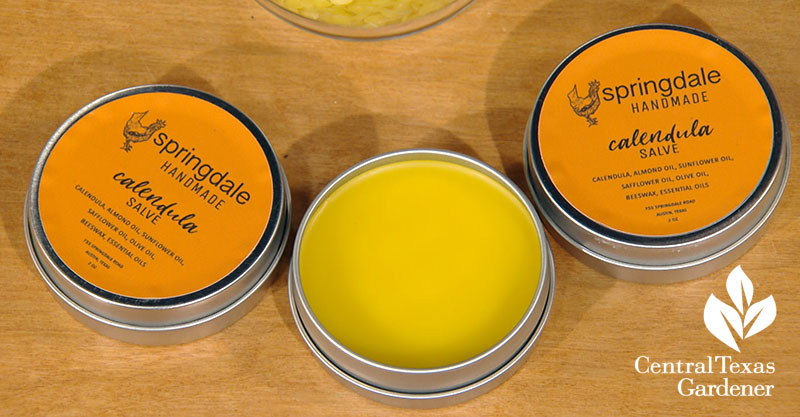
If you’d rather let Paula and Carla do the work, check out Springdale Handmade’s products, inspired by their garden harvests. I’m a confirmed fan of their salve and soap for garden-ravaged skin!
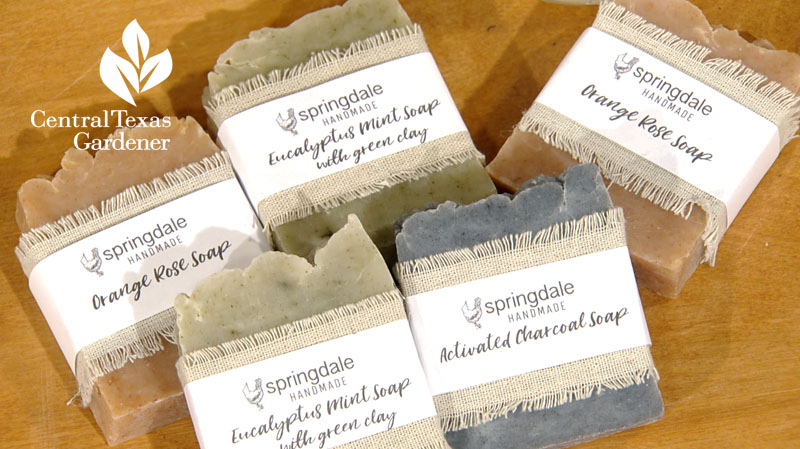
On tour in Blanco, Sheryl and James Hearn pair structured gardens with native plants for wildlife of all kinds, including a mini-meadow that’s home to larval and adult insects. Follow their daily discoveries and habitat restoration at Sheryl’s blog Window on a Texas Wildscape.
Thanks for stopping by! See you next week, Linda
tags:

